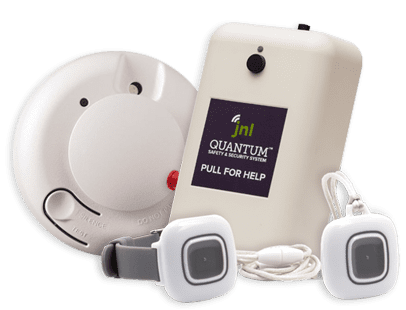
Continuing care facilities continue to experience a rapidly expanding senior population amidst rampant employee turnover and decreased reimbursement rates. Adding to these challenges, wireless nurse call manufacturers increased their yearly software and maintenance fees by as much as 80 percent in 2022. The last thing administrators need is the added frustration of rising costs and delayed upgrade implementation of their core systems.
At B&B, we feel that healthcare technology should serve providers, reduce workload and improve resident care — not create more work and raise operating costs. Many of the facilities we work with feel trapped in a cycle of rising annual fees with their current manufacturers and dealers. But we think we have a solution. Read on to learn three signs that you may have outgrown your current nurse call system.
1. YOUR NURSE CALL SYSTEM AND RELATED EQUIPMENT IS MALFUNCTIONING
Notice repeated issues with the pagers, radios, tablets, and smartphones in your facility? Or maybe call lights are going out and residents are feeling ignored? Is your response time slower than where you want it to be? Then it’s probably time to start upgrading your facility’s nurse call and related communications systems. Sounds costly, right? Well it doesn’t have to be.
We’ve recently partnered with JNL Technologies and their Quantum Wander Management & Nurse Call Systems. In most cases, JNL can replace a facility’s current system’s headend equipment (server, software, and reporting package) utilizing existing system hardware (bed stations, emergency pull stations, resident check-in stations, corridor lights, etc.) with net budgetary improvement.
Your yearly software maintenance fee could be reduced by as much as 90%.
2. YOUR COMMUNICATIONS LEVELS ARE BELOW STANDARD
If devices are being ignored, what’s the point of having them? Strong communication among staff is so important and should never be compromised because of outdated technology. Residents and their families are relying on your team to care for them and maintain their quality of life, since that’s why they are in a senior living facility.
Today’s mobile continuing care systems can reduce response times, improve caregiver efficiency, and eliminate redundancy by allowing staff members to immediately claim the alerts to which they are responding. Caregivers can also communicate with built-in text messaging, allowing sent messages to be system logged. This improves record keeping and compliance while eliminating duplicate work and improving communication — all of which adds up to better resident care.
3. YOUR SYSTEM DOESN'T PROVIDE THE INSIGHTS YOU NEED
Surveys show that using data to provide better care is a top priority at continuing care facilities. Is your system providing you with the data you need to take actionable steps to improve workflow and care? If not, you need to consider a shift.
Report filters can identify which areas of your facility are busiest, which residents require the most care, and the most frequent alarm types. Historical per-resident data can assist with proactive care in building individualized care plans and strategies.
Report modules can also leverage the extensive data collected by systems to bring unprecedented visibility to patterns and trends in your facility. For example, when a B&B facility partner adds the Quantum Resident Care Plans Module, it can easily measure the care needs of their residents and monitor the activity of the staff providing care.
Need more help determining if you've outgrown your current nurse call system?
Book a free consultation to see if B&B and JNL’s Quantum Wander Management and Nurse Call Systems is right for you.

Leave a Reply